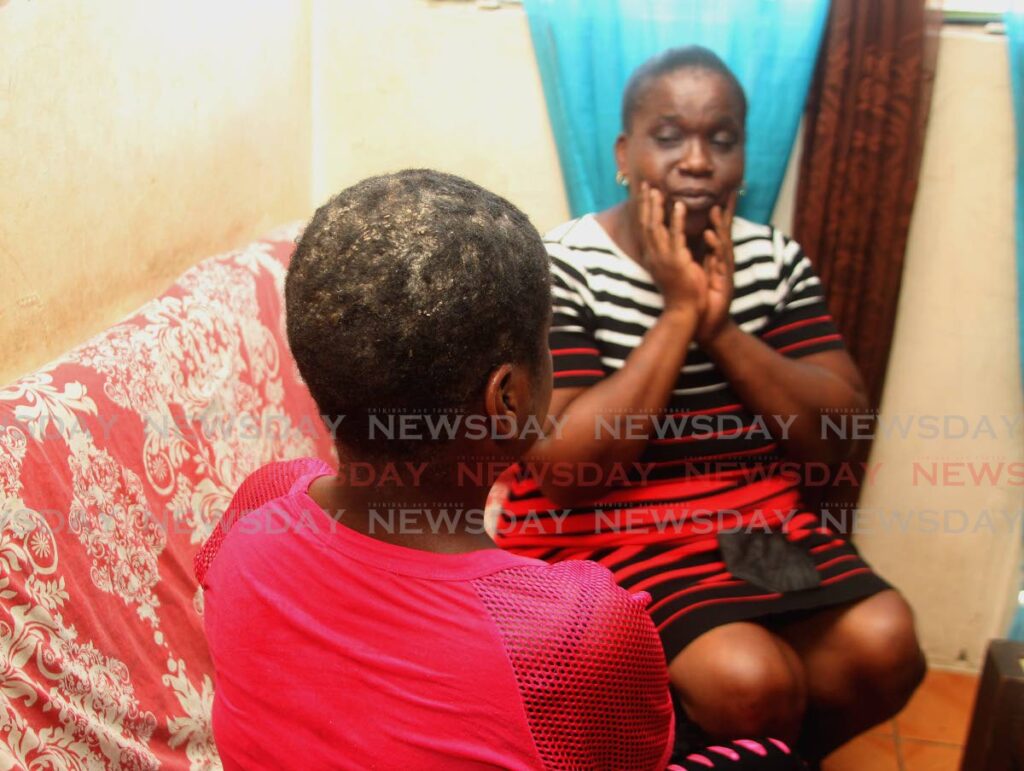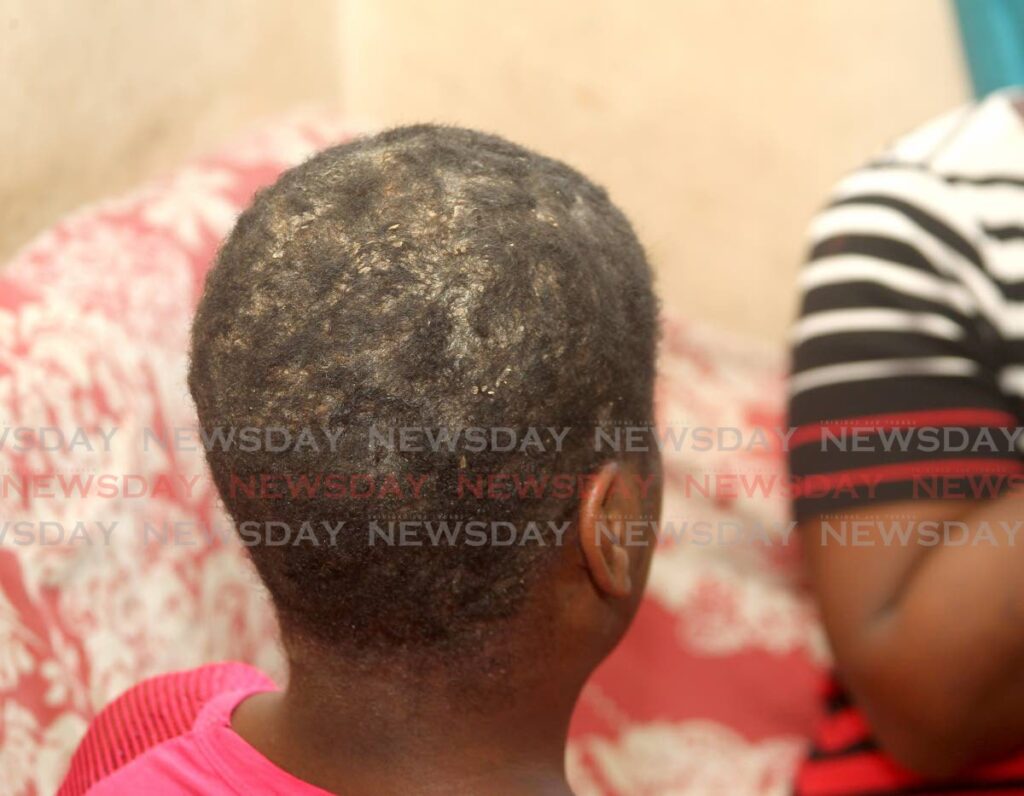Medical condition keeps girl, 14, from school

Kamila Alexander is a bright, friendly, jovial 14-year-old girl and a form two student of St Charles High School, who lives on 17 th Street, Beetham Gardens. Her one wish as school reopened was to go back to school to meet with her friends and learn more in the subjects that she enjoyed such as math.
But she is now unable to go to school – not because of the rest and reflection of teachers or because of strikes but because of a physical condition that has left her scalp covered in sores.
The girl’s mother is now asking for help, either to assist with her condition, or to assist with costly medication to treat the girl’s affliction, so that she can go back to school.
The disease is called dissecting cellulitis of the scalp, or Hoffman’s Disease. It is a chronic inflammatory disorder of the scalp characterised mainly by inflammation and swelling around the hair follicles. In most cases cellulitis is caused by an infection of the deeper layers in the skin caused by bacteria on the skin’s surface. In Kamila’s case, the disease has left her with inflamed sores all over her scalp, which oozes a form of discharge, and gives off an odour. Nicole Alexander, Kamila’s mother, told Newsday she first started seeing signs of the disease when Alexander was just a baby.

“At first I thought it was cradle cap (a condition which causes scaly patches on a baby’s scalp). We had it treated and it went away for a while,” the mother told Newsday.
“As she grew older I started noticing small buttons on her scalp whenever I combed her hair. Now, it is so bad that she has to put a towel over her head. The sores ooze pus and blood. It is so bad that we have to put a towel over her head and when we do that, the towel gets wet with all the discharge.”
The disease has left Alexander, an otherwise friendly and outgoing girl, afraid to go out. She stays at home with her uncle, niece and nephew.
“Sometimes I can’t even get her to go to the shop,” the mother said. “She doesn’t like to go out at all. She mostly stays inside looking at tik tocks on her cell phone. I know she does it so she could take her mind off what is happening with her.”
Despite her condition Alexander was still described as a jovial child. Her mother said Alexander is still able to joke about the condition with family.
“We would sometimes joke with her and say, ‘Ah smelling cheese,’ and she would laugh about it,” the mother said.
The mother said t she was unable to go to school because of the disease, although it is not contagious. She told Newsday she went to the school to ask them to give her a hiatus so that she could get treatment. At this point, the teenage girl is unable to attend and is not receiving any kind of lessons.
“She is very sad about not being able to go to school. We told her that because of her scalp she would not be able to go. She said she understood, but you can tell that she was disappointed.”
Kamila, speaking to reporters at their home, said her favorite subjects are maths, English, physics and biology. She said when she grew up she wanted to be a dermatologist, so she could help children just like her.
"When I am at school, I don't think about my scalp," she said. "In school I am like the life of the party. I am always trying to make people smile and be happy. I love to laugh, and I love to compete with myself – I always try to do better than what I did before.
"But when I am at home it is overwhelming. I think about it every minute and I break down and cry a lot "
She added that the treatment, while necessary, is also painful. Things like the weather and the heat affect her scalp and could make things worse.

"The shampoo burns. After I wash my scalp it starts oozing. I have to take another towel just to clear that up. Then I have to blow-dry my scalp. This has been happening to me since my birth. All my life I have been going through pain and suffering and I haven't gotten anything out of life as yet. I have a life to live, so I continue to stay strong," Kamila said.
Alexander’s mother said she got treatment at the Eric Williams Medical Sciences Complex up until last March, when she sought the help of a dermatologist, who prescribed a combination of antibiotics, creams, shampoos and lotions that has shown signs of clearing up the infections. But the mother said, the treatment is very expensive – with one month’s treatment costing about $1,500. Alexander’s mother said the antibiotics alone cost $900.
Alexander’s mother said as a single mother of five she is barely able to support her family, let alone find the money for the costly treatment. She said she currently works as a kitchen assistant for three days a week, for which she earns $200 a day.
Although Alexander is her youngest child and the rest have grown and moved out, she is still struggling to make ends meet. Neither she nor Alexander receives government assistance or welfare.
“Kamila is a smart, patient, understanding child that loves school,” the mother said. “It is really disappointing that she is unable to go to school because of this disease. I just want some help. Maybe someone who specialises in this kind of thing could help us. I just want my daughter to get better.”


Comments
"Medical condition keeps girl, 14, from school"